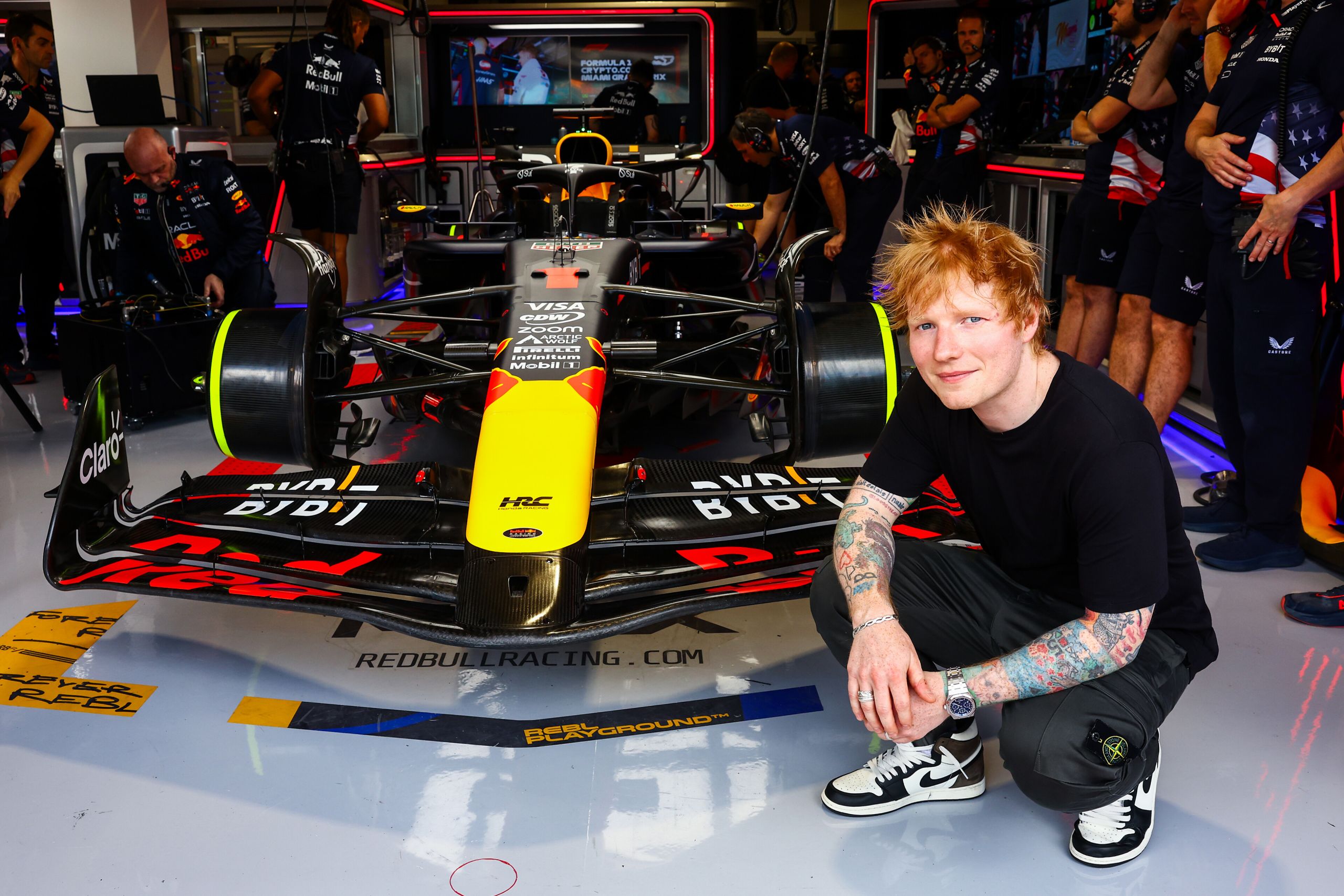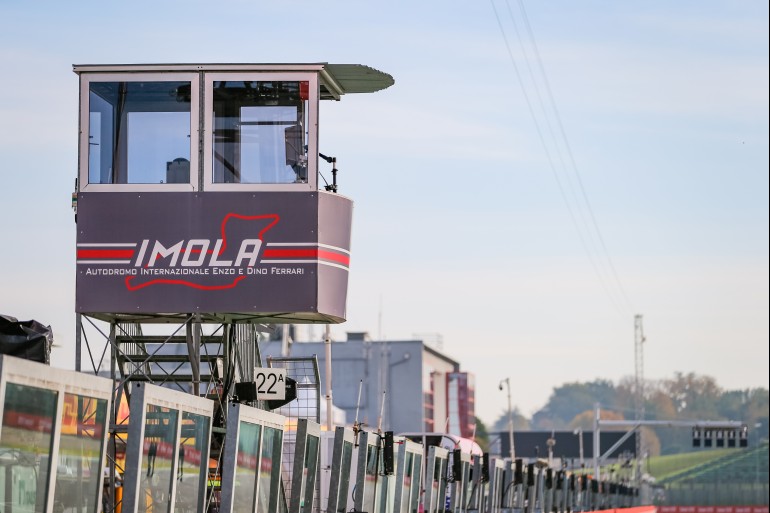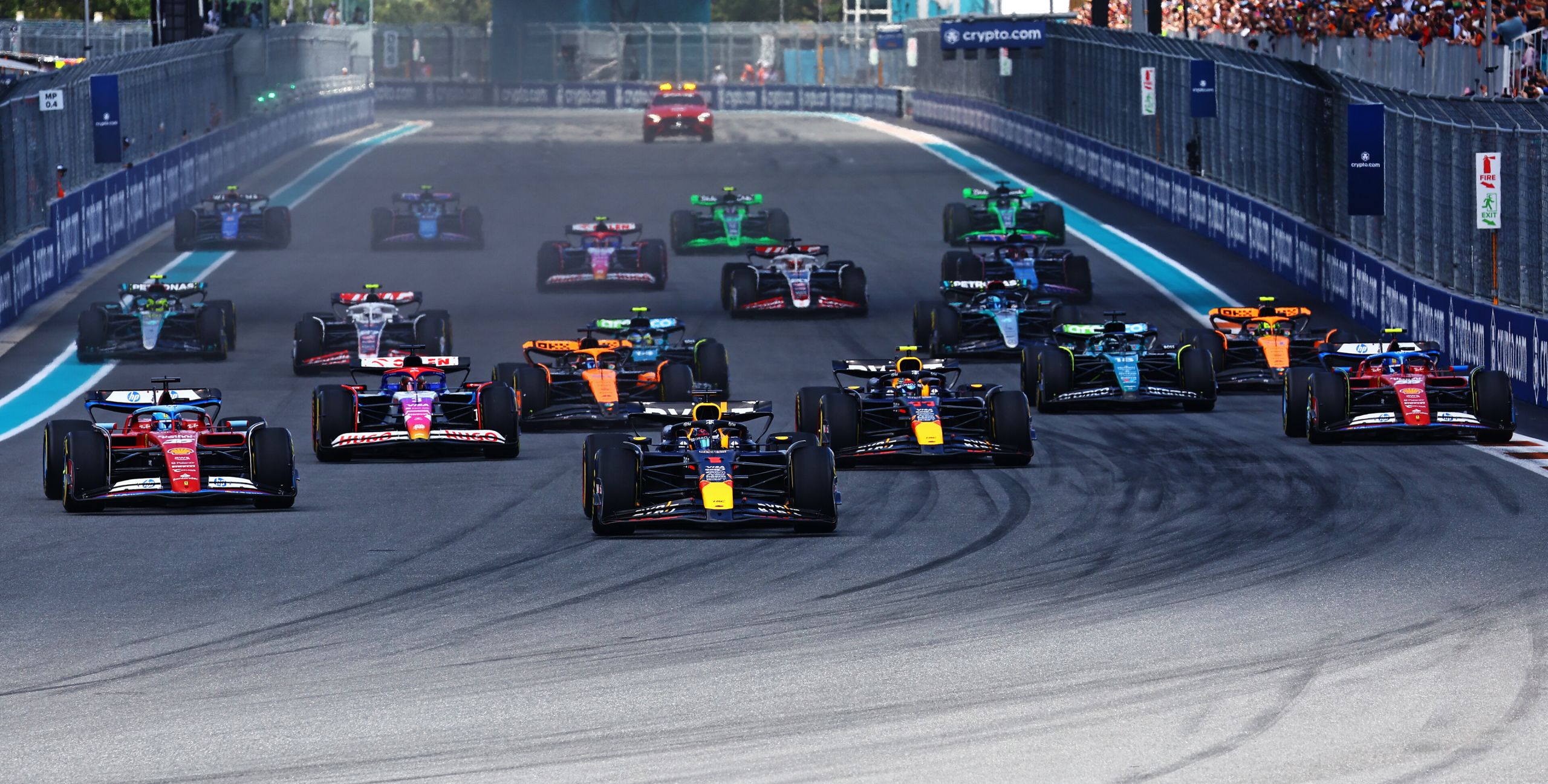Is Bahrain F1 An Asphalt Circuit: Understanding The Track Surface
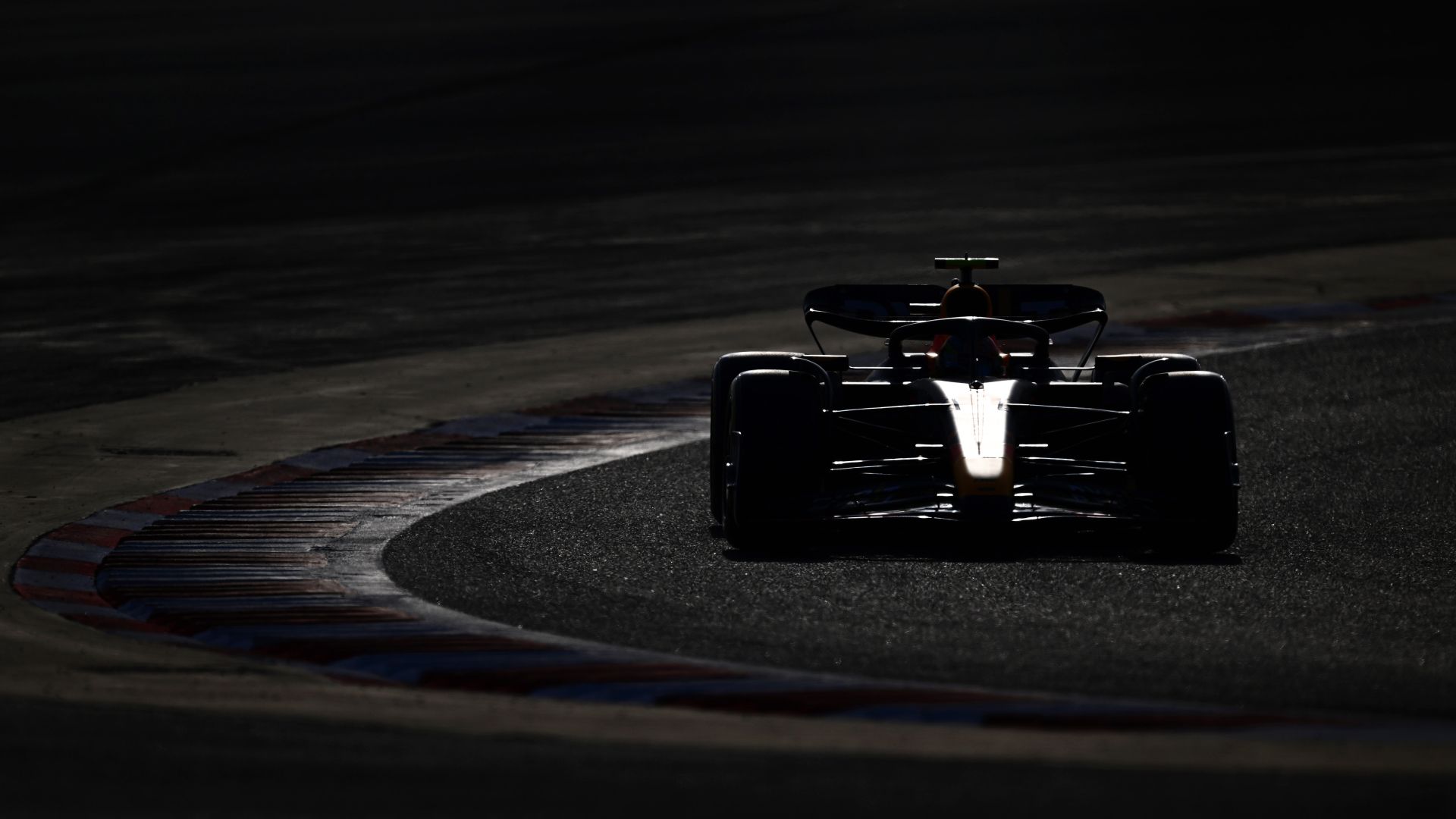
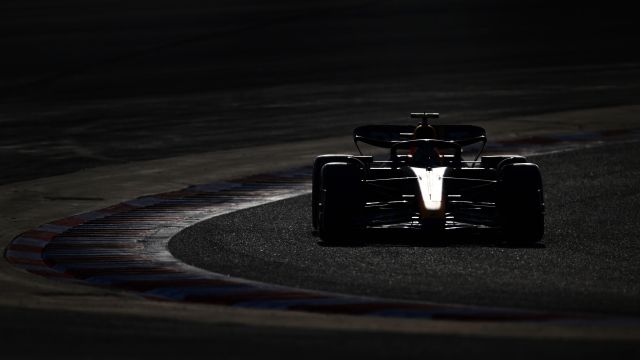
The Bahrain International Circuit, which hosts the Formula 1 Bahrain Grand Prix, is indeed an asphalt circuit. The track’s surface is a key factor in the design and function of racing circuits, with asphalt being the standard due to its high grip and smooth nature, which are critical for the performance of Formula 1 cars. The circuit’s asphalt composition facilitates the intricate ballet of F1 racing, where precision, speed, and tire management play pivotal roles in the outcome of the race.
Located in Sakhir, the Bahrain International Circuit is a well-known venue in the world of motorsports, recognized for its unique challenges and characteristics. Since its inaugural race in 2004, the circuit has been a regular fixture on the F1 calendar, with the exception of the 2011 season when the event was cancelled. The track is renowned for its sequence of high-speed straights and tight corners, which test both the drivers’ skills and the cars’ engineering.
The circuit underwent a modification for the 2010 season when an endurance layout extending to 6.3 kilometers was used. While this layout was only featured once, the Grand Prix typically takes place on the standard configuration, which is well-acquainted with the drivers and teams. The Bahrain International Circuit’s structure and careful upkeep contribute to the annual anticipation and excitement as the Formula 1 world gears up for racing under the lights in the desert environment.
History and Significance of Bahrain International Circuit
The Bahrain International Circuit is a landmark in motorsports history, hosting numerous prestigious international racing events since its inauguration.
Inception and Development
The Bahrain International Circuit, located in Sakhir, Bahrain, marked a significant milestone in the motorsport world when it was inaugurated on 4th April 2004. It was the first Formula 1 Grand Prix event venue ever constructed in the Middle East. The circuit was purpose-built for high-speed racing and has a length of 5.412 km (3.363 mi). Designed to incorporate elements of local culture and to reflect the arid beauty of its desert surroundings, the circuit quickly became an acclaimed venue in international racing. To accommodate various motorsport formats, the circuit features multiple track layouts and world-class facilities.
Major Races and Championships
- Formula One: The Bahrain International Circuit is most famously known for hosting the Gulf Air Bahrain Grand Prix. Since its inaugural race in 2004, the event has been a staple in the Formula One calendar.
- FIA World Endurance Championship: Part of the international endurance racing calendar, the circuit features in this series, showcasing long-duration race events.
- Porsche Carrera Cup Middle East: The circuit also plays host to one of the most popular regional racing series, the Porsche Carrera Cup Middle East.
- Gulf 12 Hours: This endurance race attracts teams from around the world to compete in a 12-hour challenge split into two six-hour races, further cementing Bahrain International Circuit’s role in the global racing community.
Circuit Characteristics
The Bahrain International Circuit is an all-asphalt track known for its diverse layout and technical demands. The circuit is situated in the desert environment of Sakhir, Bahrain, which adds to its unique set of challenges for Formula One drivers and teams.
Track Layout and Features
The Bahrain Grand Prix Circuit, designed by Hermann Tilke, features a length of 5.4km with 15 turns that test driver skill and vehicle setup. Key features include the famous Turn 1, a sharp left-handed apex that often sees braking duels and overtaking maneuvers. Turn 10, a deceiving left-hander, presents drivers with a challenge due to its tightening radius. The track also includes long straights and a complex of high-speed corners from Turn 12 to Turn 15, offering opportunities for high G-force experiences and overtaking.
- Turns: 15
- Notable Corners:
- Turn 1: High overtaking likelihood
- Turn 10: Tightening radius
- Turn 12 to Turn 15: High-speed section
Technical Aspects and Challenges
Asphalt composition and the prevailing wind conditions in Sakhir pose technical hurdles at the Bahrain International Circuit. The surface can influence tire wear and grip levels, with wind potentially affecting the cars’ aerodynamic stability, particularly through the sweeps and fast corners like Turn 11 and Turn 12. Moreover, the layout’s variety, from the technical infield to the high-speed straights and the slower-speed ‘endurance’ and ‘outer’ sections, require teams to strike a balance between straight-line speed and cornering agility.
- Asphalt: Driver grip and tire wear challenge
- Wind: Influences aerodynamic stability
The Grand Prix layout demands precise car setup to handle the diverse track requirements reliably. The teams have to configure their cars for an adequate mix of downforce for the corners while minimizing drag along the straights.
Impact on Racing Events
The Bahrain F1 Circuit has distinctive characteristics that influence team strategies and driver performance during racing events.
Performance of Teams and Drivers
Teams like Ferrari, Mercedes, and Red Bull, often adapt their strategies to the high temperatures and abrasive surface of the Bahrain International Circuit. The circuit’s demands put a focus on thermal tire management which can notably influence the race’s outcome. For instance, drivers like Lewis Hamilton and Sebastian Vettel have historically excelled here by managing tire degradation effectively.
Performance is also influenced by the car’s setup; those teams that find the right balance between downforce and straight-line speed often excel. During the Bahrain Grand Prix, Aston Martin and Renault have also shown significant progress, hinting at their teams’ ability to adapt to the circuit’s challenges.
Racing Dynamics and Overtaking Opportunities
The Bahrain circuit is known for its long straights and heavy braking zones, which lead to multiple overtaking opportunities that are critical for drivers such as Fernando Alonso and Charles Leclerc. Overtaking maneuvers often occur at Turn 1, following the main straight, or at Turn 4, after another high-speed section.
The track’s layout has a sequence of slow corners following the fast ones, such as the complex from Turn 9 to 11, making traction and stability key areas for gains. A good exit from one corner can set a driver up for an overtaking move into the next. Notable overtakes in the past, like those from Michael Schumacher or Nico Rosberg, demonstrate the importance of tactical acumen in these areas.
The Role of Bahrain Circuit in Motorsport and Beyond
The Bahrain International Circuit is not merely a racing venue; it serves as a significant driver of economic gains and is central to advancements in motorsport technology and practices.
Economic and Tourism Growth
The introduction of the Bahrain International Circuit has acted as a catalyst for economic development in Bahrain and the surrounding region, including countries like Egypt, Lebanon, and the United Arab Emirates. Notable for being the first Formula 1 circuit in the Middle East, it caught global attention and significantly boosted tourism in Manama and beyond.
- Spectators: Attracts over 100,000 visitors annually, including for events other than F1, such as drag racing.
- Investment: Has prompted increased investment in local infrastructure and ancillary entertainment industries.
During the COVID-19 pandemic, the Bahrain International Circuit also showcased its capacity to adapt, implementing safety protocols to protect spectators and participants while continuing to support the local economy.
Advancements and Investments in Motorsport
The circuit is a modern motorsport venue that has helped elevate the region’s profile within the international racing community.
- Capacity: Can accommodate significant numbers of spectators, providing a full-scale entertainment experience.
- Investments in Motorsport: Continued investments ensure the track’s state-of-the-art facilities remain at the forefront of motorsport technology.
The venue not only hosts Formula 1 races but is also instrumental in supporting various motorsport events and testing, which contributes to the broader technological evolution within the sport.


